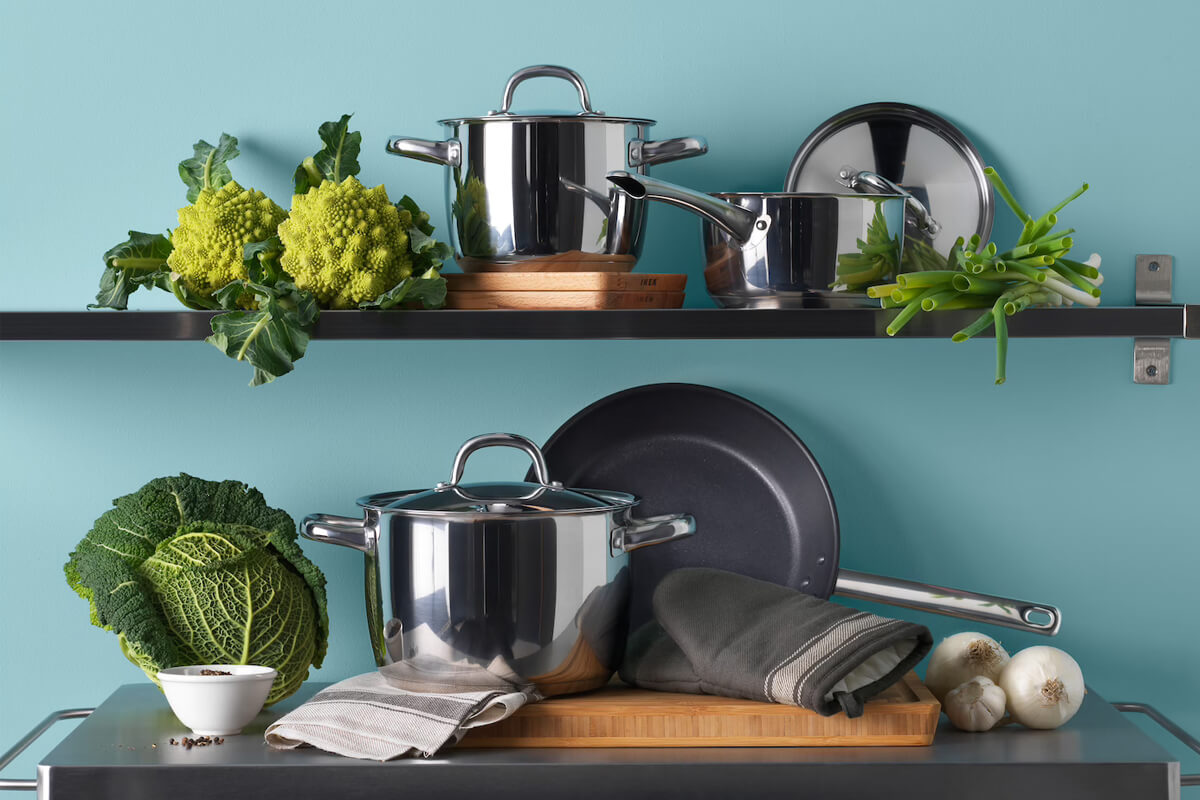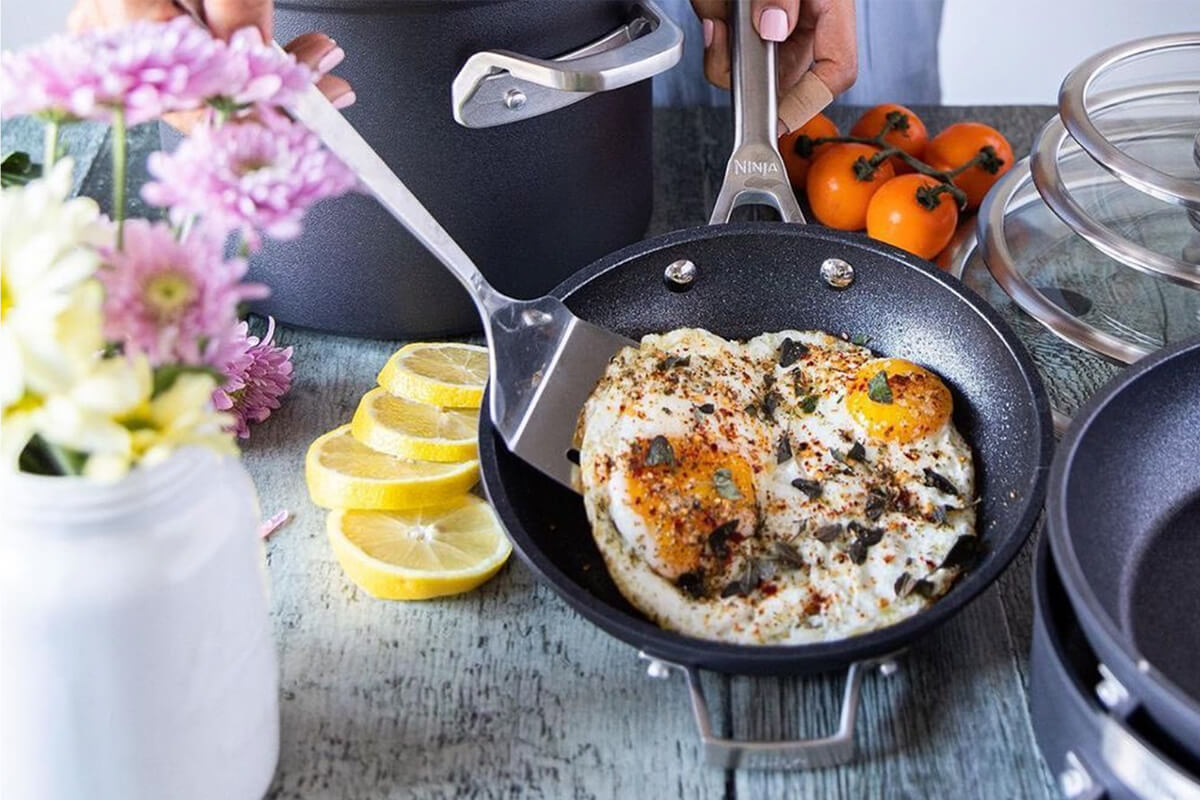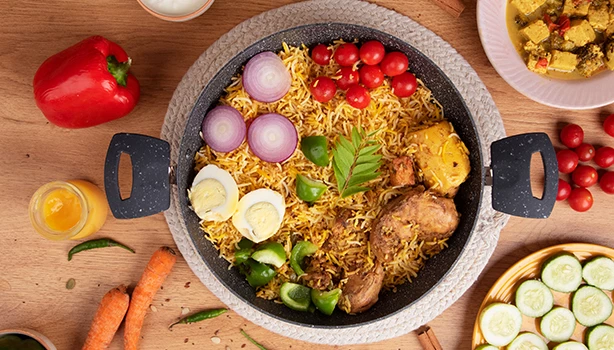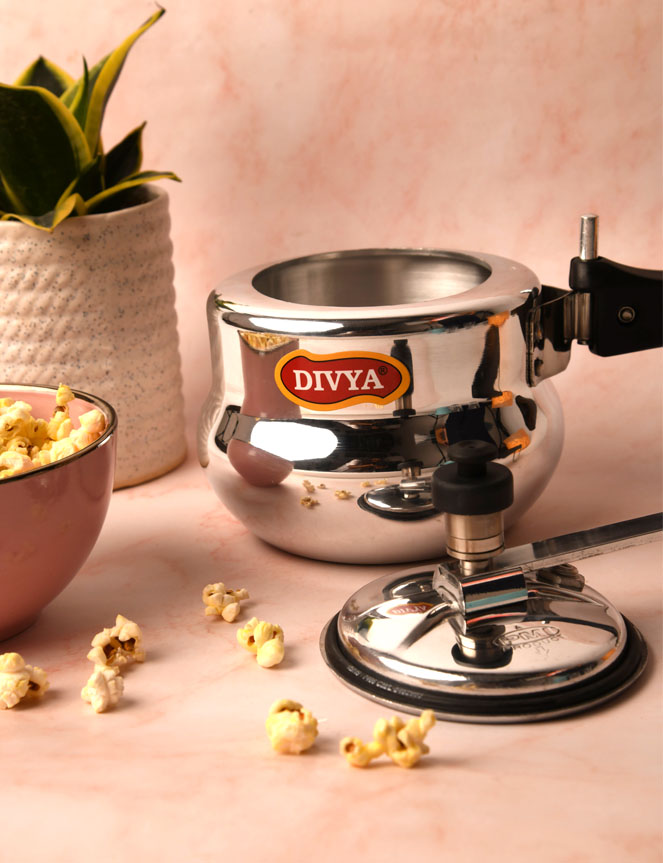The Pros And Cons Of Using Non-Stick Cookware
 SDS admin
Date : 06/03/2023
SDS admin
Date : 06/03/2023

Advantages of using non-stick cookware
- One of the most significant benefits of non-stick cookware is that it is incredibly easy to clean. The non-stick coating prevents food from sticking to the surface, so you can simply wipe it clean with a sponge or cloth. This is a significant advantage for anyone who values convenience and wants to spend less time cleaning up after cooking.
- Another advantage of non-stick cookware is that it requires less oil or butter when cooking. The non-stick surface means you can use less oil or butter and still achieve the same results, a significant advantage for people watching their fat intake or trying to live a healthier lifestyle.
- Non-stick cookware is also known for its even heating capabilities. The materials used in non-stick cookware are designed to distribute heat evenly throughout the pan's surface, ensuring that your food is cooked evenly throughout. This is particularly important when cooking delicate dishes like eggs or fish, where even cooking is crucial.
- Non-stick cookware is versatile and can be used for various cooking methods, such as sautéing, frying, and baking. It is available in a wide range of sizes and styles, making it a great addition to any kitchen
Disadvantages of using non-stick cookware
However, there are also some downsides to using non-stick cookware that should be considered. One of the most significant drawbacks is that non-stick cookware can scratch easily. Scratches can occur when using metal utensils, cleaning with abrasive sponges, or stacking cookware on top of each other. These scratches can damage the non-stick coating, leading to food sticking to the surface and uneven heating.
Another drawback of non-stick cookware is that it is unsuitable for high-heat cooking methods, such as broiling or searing. High heat can cause the non-stick coating to break down and release toxic fumes. This can be a significant health risk if you are cooking with non-stick cookware on a regular basis
Non-stick cookware also has a relatively short lifespan compared to other types of cookware. The non-stick coating can wear off over time, leading to food sticking to the surface and uneven heating. This means you may need to replace your non-stick cookware more frequently than other cookware, which can be an added expense.
There is also some concern that the chemicals used to make non-stick coatings, such as perfluorooctanoic acid (PFOA), can harm human health. While PFOA has been phased out of production in the United States, some older non-stick cookware may still contain this chemical. This means that if you are concerned about the potential health risks of non-stick cookware, you may want to consider alternatives.
Alternative to non-stick cookware
Ultimately, the decision to use non-stick cookware is a personal one that depends on your individual cooking preferences and priorities. If you value convenience and ease of use, non-stick cookware may be a great option. However, if you are concerned about potential health risks or want a more durable and long-lasting option, there are alternative cookware options available like:
- Cast iron cookware is a popular alternative to non-stick cookware. It is durable, long-lasting, and can be used for high-heat cooking. While cast iron cookware requires more maintenance than non-stick cookware, it is an excellent investment for anyone serious about cooking.
- Stainless steel cookware is another popular alternative to non-stick cookware. It is durable, easy to clean, and can be used for a wide range of cooking methods. While it may require more oil than non-stick cookware, it is a healthy and safe option
- Ceramic cookware is another option to consider. It is non-toxic, easy to clean, and can be used for various cooking methods. Ceramic cookware is also known for its ability to retain heat, which makes it great for slow-cooking dishes.
One important consideration when purchasing non-stick cookware is the type of non-stick coating used. Some non-stick coatings, such as PTFE (polytetrafluoroethylene), are more durable and longer-lasting than others. PTFE is also considered safe for cookware as long as it is used at low to medium heat and is not scratched or damaged
Another type of non-stick coating is ceramic. Ceramic coatings are made from natural materials and are considered safer and more environmentally friendly than other types of non-stick coatings. Ceramic coatings are also more resistant to scratches and damage, making them a longer-lasting option.
When using non-stick cookware, it is important to follow the manufacturer's instructions for care and maintenance. This includes using non-abrasive cleaning tools and avoiding high-heat cooking methods. It is also important to replace non-stick cookware when the non-stick coating begins to wear off, as this can lead to food sticking to the surface and uneven heating.
In conclusion, non-stick cookware has its pros and cons, and the decision to use it ultimately depends on your individual cooking preferences and priorities. While it is convenient and easy to use, it is important to be aware of the potential health risks and to choose a non-stick coating that is safe and durable. Alternative cookware options, such as cast iron, stainless steel, and ceramic, may be better suited for those who are concerned about the potential health risks of non-stick cookware or who want a more durable and longer-lasting option. Regardless of the type of cookware you choose, proper care and maintenance are essential for ensuring that your cookware lasts as long as possible and performs at its best.







